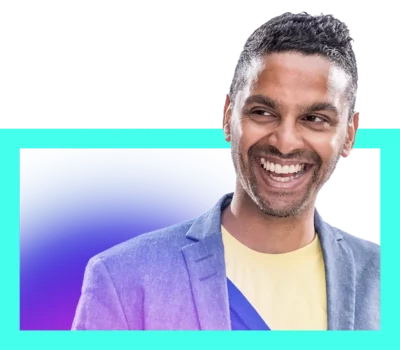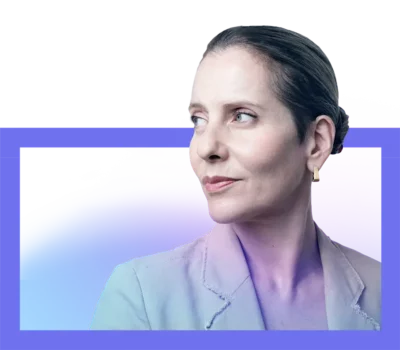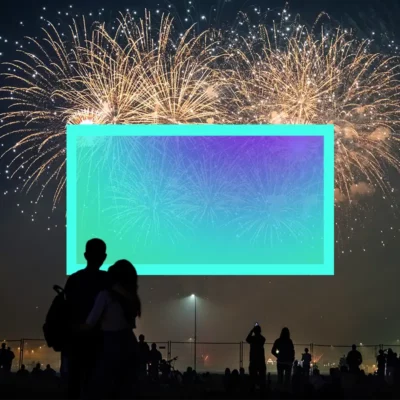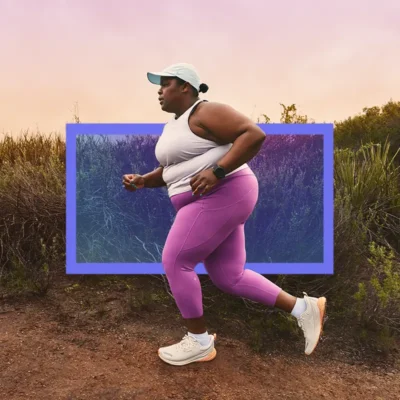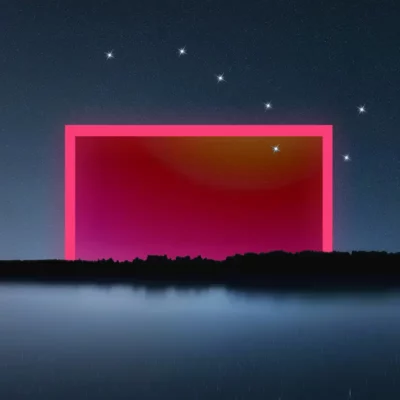Riding waves
One summer night Paola Antonelli, now curator and head of R&D at the MoMA, sets sail off the coast of Sardinia — snaking through the wavy sea with friends. She jumps off the boat, slides into the water, and makes her way to the rocks as her friends hang back, making dinner aboard. While keeping her eyes on the horizon and the setting sun, her mind wanders to the rockier questions in her life: How will she make the right choice for her future? The answer, she realizes, is right in front of her. Life is just like sailing: Some days there are bright skies, some days rolling waves. She just has to look for the right winds and waves to take her where she wants to go.
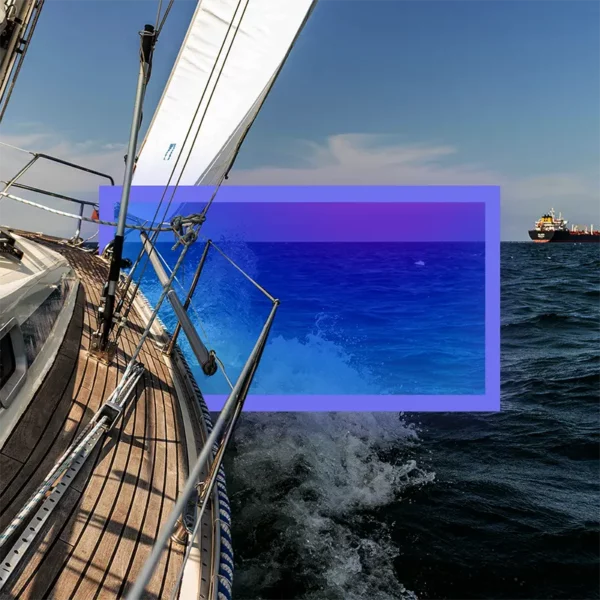
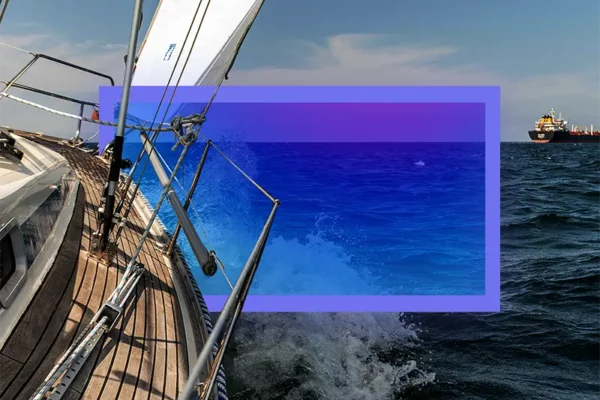
Table of Contents:
Transcript:
Riding waves
PAOLA ANTONELLI: I move from hobby to hobby, from job to job. I’m an overachiever, and it’s almost like a kaleidoscope of interests that shift and flow from one thing to another. But with university, I’m going to be singularly focused on who I am to become next.
I apply to the Bocconi, which is one of the best private universities in Milan, and I get in. It’s business and economics. I’m not very good at math and science, but I am so arrogant and full of myself that I decide to go to the hardest school ever because it’s where all the geniuses go. I mean, I’m kind of full of crap. It’s as simple as that.
ROHAN GUNATILLAKE: I’ve admired Paola Antonelli for several years now. Through her work at MoMA in New York, she champions the role design plays in our everyday life. In her Meditative Story, Paola takes us sailing, back to life on the Sardinian Sea of her native Italy. And tells a story about who she wants to become, and of how making decisions often requires us to first see where the currents are naturally taking us.
In this series, we blend intimate stories told by extraordinary people with mindfulness prompts that flow in and out of the narrative, all to help calm your mind. I’m Rohan, and I’ll be your guide on this episode of Meditative Story.
The body relaxed. The body breathing. Your senses open, your mind open. Meeting the world.
ANTONELLI: I’ve heard it said that in order to make big decisions, you have to go back to the waters of your birth, to a place that’s closest to where you were born, a place that makes you serene and open, where your thoughts are clear, and your vibrations are in tune to the vibrations of the world. That place for me is the sea, where I can take the winds and the waves in any direction.
I love every kind of sea there is, but the Mediterranean is where I immediately know that I am home. There’s a crispness in the water, and when you walk in, your feet melt into the sand. Little bubbles fizz and pop around your toes. It’s calm and invigorating, all in the same moment.
My birth home is Sardinia, an island off the coast of Italy. I live there until I am two. Then we move to what the Sardinians call “the continent.” We first live in the beautiful city of Ferrara, a small, hidden gem near Bologna, rich with historical squares and people riding bikes. And after that, we move to Milan, an industrial city, completely landlocked, but with a strong sense of elegance, art, and culture.
As a teenager, I start to go back to Sardinia, to a sailing camp in the north on the gorgeous island of La Maddalena. The Sardinian Sea is beautiful, but it can also be very rough, especially there between Sardinia and Corsica. At this camp, we sail in small 15-foot yellow boats, about six kids to a boat. Our skin is salty all the time, and it absorbs all the sweat on our bodies. It feels like our own fun little bootcamp, where we rough it out together. We sail together in six or seven of these bright yellow boats, snaking through the wavy sea. The boats have no engines. All maneuvering is done with the tides and with the wind and shaking the rudder sometimes. And if the wind dies, then you’re stuck in the middle of the sea. But to me, this is just heaven: being with a bunch of companions, where you form this different relationship, with each other and with the sea. Each day is its own adventure.
One time, we’re sailing along, and all of a sudden, we see this gigantic white stripe across the water. We look closer, and we realize there’s also a big dark shadow. And it’s a nuclear submarine from NATO, and it’s coming straight toward us. We laugh. And we look at each other in our tiny yellow boats, and then we say, “Well, we have the right of way. They have to yield.”
And then we say, “I don’t think the submarine is going to yield.”
GUNATILLAKE: Can you be there on the boat with Paola and her friends? The joy, the bravery, the sea spray on their faces, your faces, how does it feel? What emotions are here?
ANTONELLI: Back home in Milan, some years later, it comes time I choose a university. In Italy, we used not to have a four-year college system. We still don’t. It’s not like you can study general subjects for two years and then decide which direction you want to go, which subject you want to major in. No, you finish high school, and you have to make a decision and go for it.
I’m 17, and my problem is that I like too many things. I write well, I already work as a journalist after school. I love to draw, and I’m constantly drawing larynxes, and cochleas, and inner ears for my dad – because he’s an ear, nose, and throat surgeon. I also work in the PR office of Armani in the afternoons. I move from hobby to hobby, from job to job. I’m an overachiever, and it’s almost like a kaleidoscope of interests that shift and flow from one thing to another. But with university, I’m going to be singularly focused on who I am to become next.
I apply to the Bocconi, which is one of the best private universities in Milan, and I get in. It’s business and economics. I’m not very good at math and science, but I am so arrogant and full of myself that I decide to go to the hardest school ever because it’s where all the geniuses go. I mean, I’m kind of full of crap. It’s as simple as that.
I pick economics because it’s the hardest course. It isn’t business or management. It’s economics and statistics, and it is tough. I see the hardest way through as the right way through. And I start at the Bocconi, and I am so unhappy.
I think, “Okay, I can do this. I’ll just weather the math and statistics classes. I’ll have the relief of philosophy, sociology, and anthropology, all of which are better fits for me than economics.” I pass all the exams, I do pretty well, but I am just deeply unhappy.
In my second year at the Bocconi, I come back to Sardinia for a school break. And one evening, my friends and I sail out into the sea. There’s a beautiful sunset. I dive into the water, and I just keep swimming.
The coastline on this part of Sardinia is rocky and rough. And while my friends are on the boat preparing dinner, I climb on to this rock, and I sit there and sit there, just watching the sea. It’s so calm, so full of energy, so special. And I ruminate and ponder.
In life, there are things you like to do that make you wake up in the morning and bounce. And there are things, instead, when you wake up in the morning, that you don’t want to face. After two years of economics, I’m just not bouncing. I am staying with the Bocconi because I don’t want to admit defeat. But I keep thinking, “Maybe after math and statistics, I’d be able to really get into studying philosophy and sociology.” But it never happens.
As I sit on this rock, all these feelings start to come together. I need to make a decision. Do I reverse course and concede, in order to open up the possibilities for another direction? When we have to make a decision, especially a tough decision, I think we all tend to hope that either somebody will tell us what to do, or that lightning strikes and all of a sudden we just know.
At this moment, no one tells me what to do. But this clarity shines inside me. And suddenly, I know exactly what I have to do. The awareness doesn’t come as a shock or an electrical current. Not at all. Instead, it’s very, very quiet. Here, as I look at the waves, I think, “Yeah, that’s it. I need to get the hell out.”
I make the decision right there. It is August, and I decide to change schools. For me, it’s the only real decision that I remember making in my entire life. I feel that I’ve never, ever made a decision except for that one. Everything else has just happened to me.
When I sail, I always follow where the sea wants to go, but in attending Boconni and declaring the path my career would take, I hadn’t done so. I had charted an impossible course upwind. I decide on a new tack – this time in the direction that the prevailing wind and waves are naturally taking me. I go back to Milan, and without even telling my parents I switch from the Bocconi to architecture school.
GUNATILLAKE: Does Paola’s story remind you of a big decision you made in your own life? What was it and how did it feel to make? Is there an echo of that decision in your body, your being even today?
ANTONELLI: At that time, I am such an unbearable know-it-all. I am so arrogant. It’s not easy for me to admit defeat. And in my eyes, at that time, it is a defeat. But I have the luxury of being able to follow my instincts, and it saves me.
When my parents find out I’ve switched schools, my father is especially furious. Because my dad is a surgeon. And he is a university professor. And to him, the Bocconi is a serious school, and economics is a serious degree. And he thinks architecture is Sodom and Gomorrah. But I still decide to switch schools.
Let me be frank. I am not particularly attracted to architecture at that point; I am just attracted to running away as far as possible from the Bocconi. At that time in Milan, there are two schools that are the catch-alls for people that don’t really know what they want to do. One is the law school, and the other is architecture school. It is very clear to me that law is not even to be discussed, but architecture is so chaotic. All sorts of designers come out of it. Fashion designers. Chefs. Product designers. Graphic designers. So I can see that it is a place where I can create my own path.
The first time I visit the faculty, I get lost in the building. I open a door, and it’s really, really, really dark. There’s rap music playing really, really loud. I adjust my sight and see this guy wearing a fluorescent lime-green sweater, a fluorescent lime-green bracelet, and bright green sneakers. He’s talking in the microphone, in Italian, saying: “This is today’s culture, it’s driven by impulses.”
His name is Corrado Levi, a professor of Architectural Composition 5. There are two guys in the same room jumping around and making graffiti on the wall. And Corrado says, “This is Toxic and A-1. They’ve come from New York to teach us what today’s culture is about.” I walk into a class and feel this deep curiosity – and deep relief. I think, wow, this is where I need to be.
It’s as if I’m sailing again. Oceans are “liquid” of course, and I get to thinking about this word. Liquid is the state that I really love. It’s the state that I want to live in, because it enables me to change my mind and change my position very easily, without going against the laws of physics. And in a way, architecture is the most liquid of all schools I can go to.
It’s ironically unstructured. There is no sense of what you have to do, or how to design. In a way, it’s a sea of possibilities, where if an obstruction comes up you could simply flow in another direction. In it, I am fluid.
GUNATILLAKE: Liquid. Fluid. What does that word mean to you? What would it be like to be liquid in this moment? Give it a go.
ANTONELLI: When I sail, when I’m in the water, I feel the wind and the waves around me and I can change direction easily, and yet I’m supported at the same time. It’s a really beautiful way to be.
Sometimes there are waves. Sometimes there are troubles. Sometimes there are changes of direction. It’s important to be ready to take those waves. Sometimes you capsize, or you sail all night in a storm, and you do not really know if you’ll make it – but you feel intensely alive.
Time has told me that I made the right choice, sitting on that rock off the coast of Sardinia. And I think I was helped by returning to the waters of my birth. To the place where I’m serene. Where my thoughts are clear and my vibrations are in tune to the vibrations of the world.
Later in life I haven’t really had to make big decisions. I believe things come to you when you’re going in the right direction. Everything happens to me exactly like sailing. The waves come, the winds come. I wait for the right ones, and I take them.
Rohan’s closing meditation
GUNATILLAKE: Paola’s idea of being liquid really struck me. And one of the wonderful things about meditation is that there are so many ways to do it, so many ways to explore how to bring more mindfulness and compassion to our lives. And with that diversity comes many techniques, all with their slightly different instructions to remember.
So I started to wonder what a liquid meditation might be like. And what came to mind was going with the flow. Leaning back and letting things just happen. Not really using any technique at all. Just flowing with what is happening. Just meditation. So let’s give that a go.
Letting the body settle down wherever it is, however it is. Doing what it needs to do to quieten. Relaxing the belly. The belly, soft and fluid. Enjoying breathing. The breath, soft and fluid.
And watching what comes into your awareness. Floating on top of everything that is happening: sensations, thoughts, distractions. Feeling your experience, knowing it, but not caught up in it.
Floating. Fluid. Liquid. Coming back. Leaning back, metaphorically.
Aware of what is happening inside you. Aware of what is happening around you. And floating with it. Not being dragged in. Not being dragged down.
Liquid. Your attention flowing, from one experience to another. And if you notice yourself getting caught up in this and that, unentangling yourself, and going back into the flow.
Liquid mind. Liquid heart.
The waves come. The winds come.
And trusting your ability to go with the flow. To have an intimate connection with the world. But not caught up in it.
Thank you.
